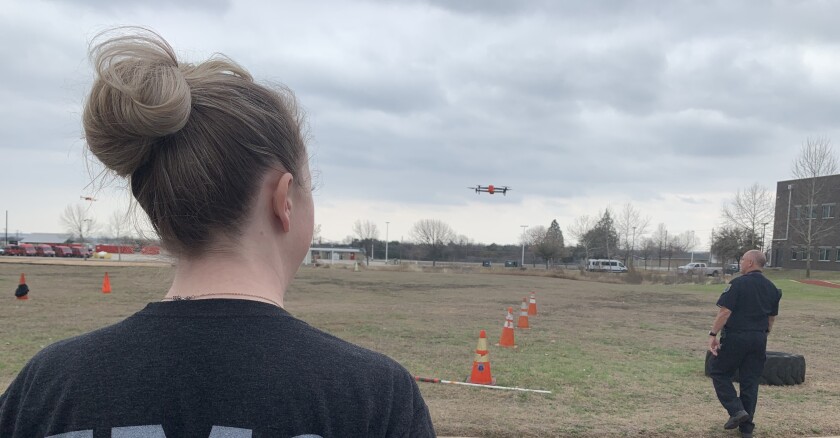The move mirrors other government agencies that are also beginning to implement drones to assist on various missions.
ATCEMS Division Chief Adam Johnson explained that the agency is unique in that it is separate from the police and fire department. He added that the team prides itself on being on the leading edge of things, with one example being the recently launched VR/AR training program for first responders.
Its drone program — Special Projects – Aerial Recon – Transport – Aid – Navigation (SPARTAN) — is no exception and was created to assist with a variety of missions.
Approval for the program was granted in the summer of 2020, and aircraft were purchased to begin training in autumn of 2020. SPARTAN became officially operational in January, with a total of 15 aircraft operated by 16 qualified unmanned aerial systems (UAS) pilots.
The system uses a web-based livestreaming product called DroneSense for monitoring the footage captured by the aircraft. This software allows a more seamless connection between the SPARTAN pilots, ATCEMS responders on the ground, and even other city agencies using drones, explained Johnson. The stream, connected through broadband, could be displayed on the wall of the Emergency Operations Center, but at the same time, it could be in use by an incident commander on the ground via a tablet or smartphone.

Austin-Travis County EMS
SPARTAN’s primary focus in missions will be to give responders a better overview of what is happening in different scenarios, Johnson explained. Potential missions include search and rescue, mass casualty event management, medic overwatch, fire support, and emergency management support.
Because Travis County is in what is often referred to as “flash flood alley” and surrounded by several greenbelt areas, improving the process of search and rescue was a key priority for the program. The technology can work as a force multiplier in swift water rescue work, Johnson explained, helping ATCEMS quickly locate people who may be in trouble. At nighttime or in flash flood conditions, said Johnson, drone technology could greatly reduce the time it takes to get help to someone in a dire situation.
Additionally, in any large public gathering, from protests to the Austin City Limits Music Festival, SPARTAN could allow ATCEMS to monitor and make better decisions for public safety. By sending a drone to monitor an event, ATCEMS responders are given an aerial view of what is happening in each direction, traffic patterns and conflicts and a real-time feed of any changes. Another example of crowd monitoring is the COVID-19 vaccine distribution site in Travis County, at which the SPARTAN team acquired visuals of traffic flow and patterns, allowing changes to be made for greater efficiency.
“They say a picture’s worth 1,000 words, right?” Johnson asked. “We can see real-time what’s happening in that crowd or on the scene, and it lets us make better decisions and use the resources that we have more efficiently.”
The primary funding for SPARTAN came through grant money from the Department of State Health Services, according to Johnson. It is grant money that ATCEMS receives annually for equipment and operations, which funded all the initial equipment purchases. Additional costs for things like training and qualification processes for the pilots were funded through ATCEMS’ line-item budget.
No privacy concerns about SPARTAN have been voiced to ATCEMS, said Johnson. Part of the reason may be that government use of UAS technology is not a novel concept in Austin; the police and fire departments have already been using drones for public safety. Johnson said that potential privacy concerns are something that the team is aware of and is trying to combat by being transparent on social media about the missions that SPARTAN is undertaking. He also noted that the SPARTAN team is not executing law enforcement missions; specifically referring to crowd monitoring of protests, he said that the team is there to find patients and help people.
According to Johnson, ATCEMS is in the process of training another group of commanders, allowing the team to put a second aircraft out 24 hours a day every day.
In the future, the program could evolve to include the use of autonomous drones, Johnson said. The department’s goal is to have autonomous drones available in three to five years that can deliver medications to 911 callers faster than a responder could get there by ground. This could help the team deliver critical medical equipment — from epinephrine and naloxone to automated external defibrillators.








